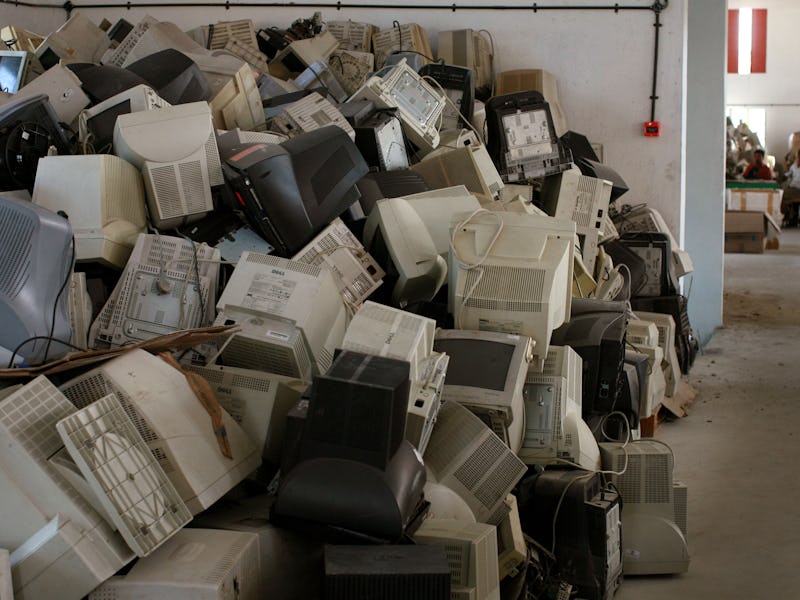We Threw Away 9 Great Pyramids' Worth of Electronics in 2016, Report Shows
All of your old iPhones are probably sitting in a landfill somewhere.

How much stuff did we throw away in 2016? Imagine traveling to Cairo and taking the trip out to Giza to see the Great Pyramids. Imagine those three vast structures, those last remaining wonders of the world are made not of 4,500-year-old limestone and granite but rather every computer, phone, refrigerator, TV, solar panel, and washer thrown out last year.
Now imagine you look to your right and there’s another eight sets of these gigantic trash pyramids. That is how much we collectively threw out in 2016, equaling 44.7 million metric tons.
The Global E-Waste Monitor 2017 was released Wednesday, and it reveals that as electronics like smartphones become cheaper and more accessible the amount of electronic waste in landfills and polluting streets has steadily increased. According to the report, there are heaps of totally reusable or recyclable tech just laying around.
Electronic waste — or e-waste — is what happens when you decide to just get rid of your phone at the first sign of it slowing down. It still technically works, but you don’t want to deal with the headache of fixing it.
This habit has resulted in those 44.7 million metric tons of e-waste — if you’re in the market for another architectural analogy, that’s roughly the weight of 4,500 Eiffel Towers. All of that e-waste contains about $55 million worth of gold, silver, copper, and other useful materials.
It is expected that the following three EEE categories, which already constitute 75 percent of global e-waste by weight (33.6 Mt of 44.7 Mt), will also see the fastest growth.
“Small equipment” made up more than a third of the e-waste in 2016. That includes stuff like microwaves, phones, and vacuum cleaners.
The researchers involved with compiling this data hope that these shocking numbers serve as a wakeup call to consumers and governing bodies alike.
“We live in a time of transition to a more digital world, where automation, sensors and artificial intelligence are transforming all the industries, our daily lives and our societies,” said Antonis Mavropoulos, President of the International Solid Waste Association, in a statement. “E-waste is the most emblematic by-product of this transition and everything shows that it will continue to grow at unprecedented rates. Finding the proper solutions for e-waste management is a measure of our ability to [utilize] the technological advances to stimulate a wasteless future and to make circular economy a reality for this complex waste stream that contains valuable resources.”
Global e-waste -- discarded products with a battery or plug -- shows a staggering 44.7 million metric tonnes (Mt) generated in 2016 -- up 3.3 Mt or 8 percent from 2014.
The report goes on to predict that at this rate, e-waste will increase by 17 percent in four years. That’s an estimated 52.2 million metric tons by 2021. This has obvious detrimental effects on the environment, and it is also a huge waste of resources.
Figuring out a way to slow down and accurately measure the amount of e-waste being produced is important. But finding out a way to harvest and reuse e-waste already out there would put useful materials to work instead of just having them gather dust.
So remember, don’t just trash your old iPhone. Try to sell it online to make a quick buck, pass it on to a friend if you’re lazy, or hit up your local electronics store to drop it off. Retailers like Best Buy have recycling programs for all of your old tech.